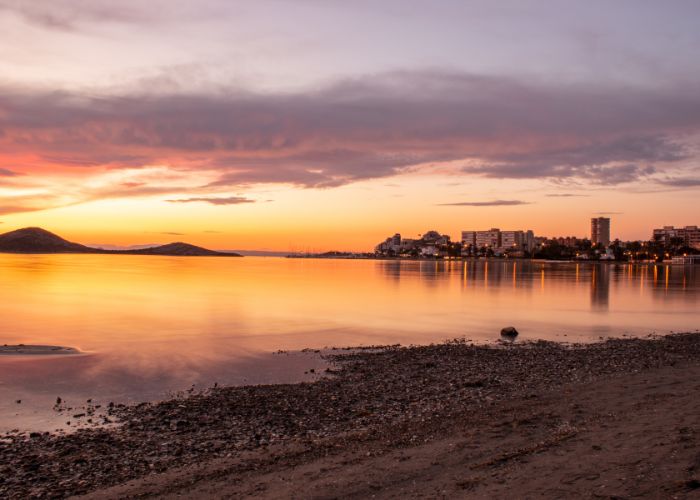SAN JAVIER – The great inland sea Mar Menor records the highest temperature in its history with an average of 31.25 degrees Celsius. However, some parts reach higher temperatures and at shallow points, the water can be over 35 degrees.
The previous maximum temperatures recorded since 2016 were 30.85 degrees on August 8, 2017, 30.54 degrees on the same dates in 2018 and 30.22 degrees on July 20, 2022. This information has been shared by the Mar Menor Monitoring Committee, by spokesman Emilio Maria Dolores.
Related post: Abnormally high water temperatures in the Mediterranean Sea
Temperature, the spokesman said, “has a very important effect on the ecological conditions of the Mar Menor just as it does in the Mediterranean”. In the marina club La Isleta, located in La Manga, 32.4 degrees Celsius has been recorded. Meanwhile, in very shallow areas the temperature can rise to more than 35 degrees at two o’clock in the afternoon.
Related post: Mar Menor situation is untenable
Improve quality
To improve the quality of the highly polluted water in the inland sea, 14,718 tons of algae have been removed. This is the amount removed so far this year by fishermen and people from environmental groups. This takes 307 tons of nitrogen and 10.2 tons of phosphorus from the ecosystem. In the first case, it is 33.7% of what has been imported so far this year. And an additional 44.1% for everything imported this year, in terms of phosphorus.
Most polluted water enters the inland sea through the Rambla del Albujón. The water here is largely polluted by the concentration of nitrates from the intensive agriculture in the area. This year so far, 61.9% more water has come in here than in the same period last. It is now about 7.3 cubic hectometres. This has led to the importation of 23% more nitrates and three times more phosphorus.
Marine heatwaves in the Mediterranean Sea
The case of Mar Menor is not unique. Code red applies to the situation of the past three months in the Spanish Mediterranean. The SOCIB map of temperature anomalies on the surface shows that large areas of water off the Spanish coast are today 3 to 4ºC above the average of the past four decades. The worst is the sea around the islands of Corsica and Sardinia (Ligurian and Tyrrhenian Seas). Here, the difference is 5 degrees Celsius.
Marine ecosystems under threat
This excessive heat has detrimental effects on ecosystems, as well as on coastal human activities, such as aquaculture or commercial fishing. “The high temperatures threaten marine ecosystems, and biodiversity and can promote the spread of jellyfish and harmful alien algae,” explains Mélanie Juza. She is a researcher at the Balearic Islands Coastal Observation System (SOCIB-CSIC).
The Mar Menor is not in good shape. In the water, a process of eutrophication is underway as a result of decades of supply of nutrients via intensive agriculture in the area and other human activities such as mass tourism.


